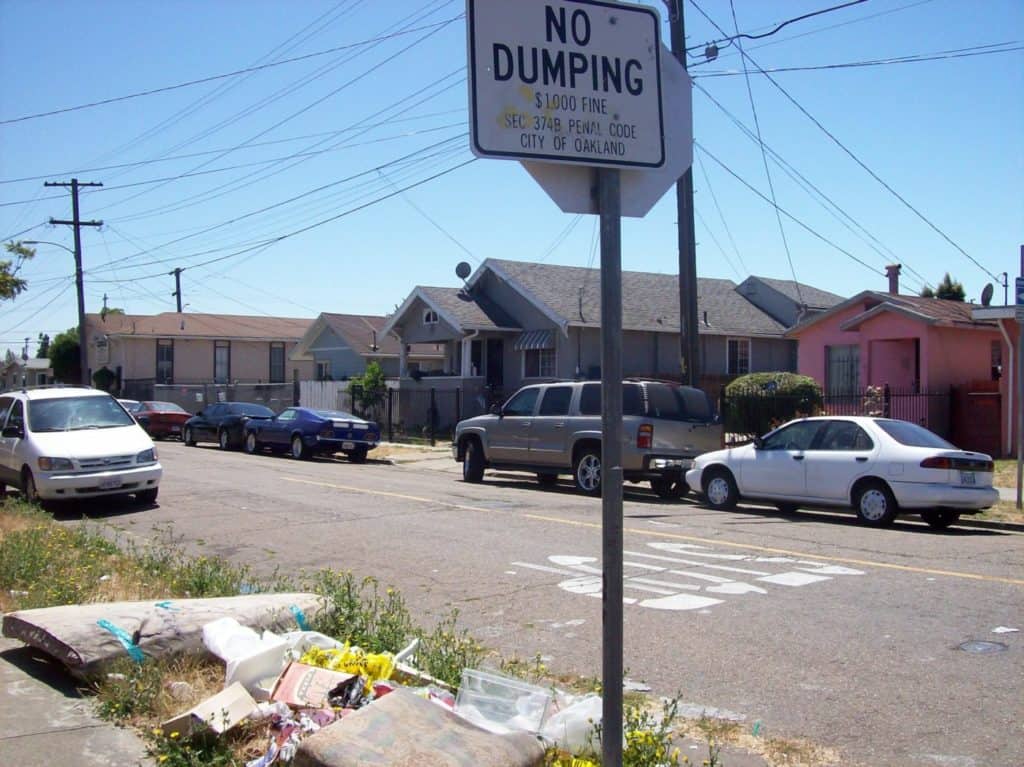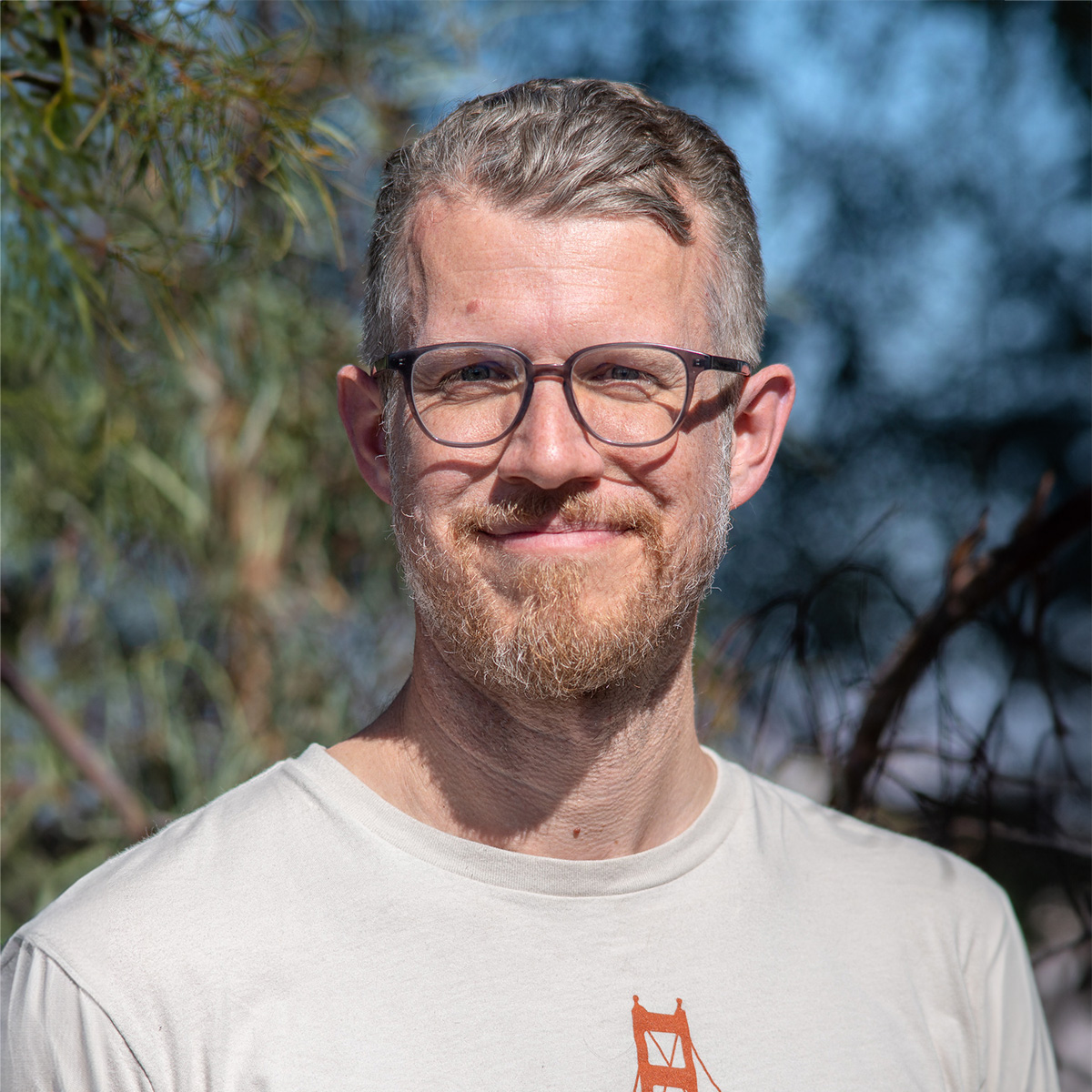 By Dominic Williams “The Bay Area has a massive and awful problem… it’s illegal dumping, and it’s trashing all of us.” Oakland Mayor Libby Schaaf delivered this message last May, and it’s clear that the problem is not just confined to cities such as Oakland and San Francisco. All across this beautiful Bay Area, we see the effects of trash build-up and illegal dumping on our streets. So where does this trash come from? People may hastily assume that the trash we see on our commutes to work in the morning originate in homeless encampments, especially those near bodies of water. This is not true. Homeless encampments account for just a small portion of the trash issue. Studies show that: • Only 3% of street trash is due to homeless encampments. • Up to 10% of trash comes from professional haulers and dumpers who dump illegally. • Higher illegal dumping takes place in low-income areas and areas with more renters, non-English speakers, and more densely packed households. “It’s not just a health issue and a blight issue, it’s an equity issue,” says Mayor Libby Schaaf. The cost of living continues to rise in the Bay Area and many residents cut spending in areas they deem non-vital – such as the $50 or more to take a load of garbage to the dump. Garbage haulers usually provide one or two free bulky item pickups per year; however, a lack of awareness about this service leads to underutilization and as a result, counties have to pick up the cost. For example, Contra Costa was forced to spend $1.2 million in 2017 to pick up illegally dumped trash. Steps are being taken at a regional level to address trash in our neighborhoods and waterways. In 2015, the Municipal Regional Storm Water Permit specified trash reduction targets for 73 municipalities in the area, stretching from Fairfield in the north down through San Jose in the south. According to the permit, these municipalities must: • By July 1, 2019 — Reduce the level of trash in their storm drains by 80% • By July 1, 2022 — Prevent all trash from flowing into city storm drains by 100% Most of the areas included under this permit are already seeing significant improvements in trash levels, but too many are not, due to a lack of resources or impetus. Part of the issue that causes significant concern among local residents is the composition of the trash. Mattresses, old furniture, home waste, and backyard junk are common. The real threats are hazardous wastes, old paints, and toxic materials that are discarded on the streets. Bay Area residents are frustrated with the lack of action by the local government and have taken the issue into their own hands. Community groups, such as the East Oakland Congress of Neighborhoods, Love Your Block, and more have joined forces with nonprofits and agencies like Save the Bay, San Francisco Estuary Partnership and the California Coastal Commission to remove litter from storm drains and advocate for policies to prevent it from getting there in the first place. Oakland Community Organizations (OCO) partners with local churches, unions, and residents, as well as environmental advocacy groups to pressure local government into implementing a comprehensive trash management plan. In 2017, Save the Bay and OCO successfully pushed the City of Oakland to dedicate more staff and budgetary resources to illegal dumping response in East Oakland and across the city. Recent reports indicate that these efforts are having an impact; there is less trash on the street overall and illegally dumped materials are removed more quickly. But the problem is far from solved, according to OCO organizer Emma Paulino. Trash is a global crisis, but its origin starts locally in our communities. Read more and learn how local community organizations are battling illegal dumping in their neighborhoods.
By Dominic Williams “The Bay Area has a massive and awful problem… it’s illegal dumping, and it’s trashing all of us.” Oakland Mayor Libby Schaaf delivered this message last May, and it’s clear that the problem is not just confined to cities such as Oakland and San Francisco. All across this beautiful Bay Area, we see the effects of trash build-up and illegal dumping on our streets. So where does this trash come from? People may hastily assume that the trash we see on our commutes to work in the morning originate in homeless encampments, especially those near bodies of water. This is not true. Homeless encampments account for just a small portion of the trash issue. Studies show that: • Only 3% of street trash is due to homeless encampments. • Up to 10% of trash comes from professional haulers and dumpers who dump illegally. • Higher illegal dumping takes place in low-income areas and areas with more renters, non-English speakers, and more densely packed households. “It’s not just a health issue and a blight issue, it’s an equity issue,” says Mayor Libby Schaaf. The cost of living continues to rise in the Bay Area and many residents cut spending in areas they deem non-vital – such as the $50 or more to take a load of garbage to the dump. Garbage haulers usually provide one or two free bulky item pickups per year; however, a lack of awareness about this service leads to underutilization and as a result, counties have to pick up the cost. For example, Contra Costa was forced to spend $1.2 million in 2017 to pick up illegally dumped trash. Steps are being taken at a regional level to address trash in our neighborhoods and waterways. In 2015, the Municipal Regional Storm Water Permit specified trash reduction targets for 73 municipalities in the area, stretching from Fairfield in the north down through San Jose in the south. According to the permit, these municipalities must: • By July 1, 2019 — Reduce the level of trash in their storm drains by 80% • By July 1, 2022 — Prevent all trash from flowing into city storm drains by 100% Most of the areas included under this permit are already seeing significant improvements in trash levels, but too many are not, due to a lack of resources or impetus. Part of the issue that causes significant concern among local residents is the composition of the trash. Mattresses, old furniture, home waste, and backyard junk are common. The real threats are hazardous wastes, old paints, and toxic materials that are discarded on the streets. Bay Area residents are frustrated with the lack of action by the local government and have taken the issue into their own hands. Community groups, such as the East Oakland Congress of Neighborhoods, Love Your Block, and more have joined forces with nonprofits and agencies like Save the Bay, San Francisco Estuary Partnership and the California Coastal Commission to remove litter from storm drains and advocate for policies to prevent it from getting there in the first place. Oakland Community Organizations (OCO) partners with local churches, unions, and residents, as well as environmental advocacy groups to pressure local government into implementing a comprehensive trash management plan. In 2017, Save the Bay and OCO successfully pushed the City of Oakland to dedicate more staff and budgetary resources to illegal dumping response in East Oakland and across the city. Recent reports indicate that these efforts are having an impact; there is less trash on the street overall and illegally dumped materials are removed more quickly. But the problem is far from solved, according to OCO organizer Emma Paulino. Trash is a global crisis, but its origin starts locally in our communities. Read more and learn how local community organizations are battling illegal dumping in their neighborhoods.

















































